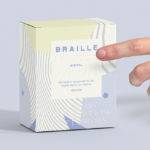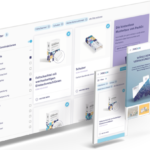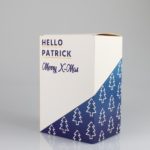PackEx offers optimum colour reproduction with seven-colour printing
Worms. July 2019 - Seven colours instead of CMYK: PackEx uses seven-colour printing with PANTONE Extended Gamut 7C for printing folding boxes. This allows almost all spot colours to be reproduced cost-effectively. Both the offset and digital printing systems work with the extended colour spectrum - an innovation on the market.
More and more companies are attaching importance to a corporate identity with an individual colour scheme. However, the use of special colours is expensive and pollutes the environment through resource-intensive production processes. We, as a subsidiary of August Faller GmbH & Co. KG, take countermeasures: All printing systems are coupled with the innovative PANTONE Extended Gamut 7C and thus comply with the latest technical standard. This enables us to guarantee high colour accuracy and faster production times.
Extended colour spectrum ensures high colour accuracy
Regardless of whether offset or digital - with PackEx, both printing systems work with the CMYK colours(cyan, magenta, yellow and key) as well as the colours orange, green and violet. This means that special colours can be simulated in just one print run. The extended colour gamut guarantees a more extensive colour space than the conventional 4C mode. Another advantage is that a separate ink is not purchased from external suppliers for each spot colour. This eliminates the surcharge for this completely. An innovation that, despite its many plus points, has hardly been used to date. Julian Erhard, Co-Founder and Director Operations of PackEx, explains why: "A conversion to seven-colour printing is only possible with difficulty, if at all. We have therefore designed both printing systems for the extended colour spectrum from the outset." The ordering process is very simple: "You create the desired spot colours according to PANTONE in your print data and upload the PDF in the PackEx portal." PackEx takes care of the rest.
Offset or digital printing? The smart workflow decides
Because it is not only with seven-colour printing that PackEx sets milestones - we also take innovative paths in the choice of printing techniques. "We are guided by the respective advantages of the two printing processes and use them accordingly," says Erhard. This works thanks to the intelligent PackEx Cloud workflow, which converts the print data based on PackEx colour management. In the process, the customer data is broken down into production-ready data and combined in such a way that it can be placed on the print sheets in a resource-saving manner. The workflow then controls the offset or digital printing depending on the substrate and print run in a job-specific and fully automated manner and production starts. Erhard explains: "This not only reduces costs, but also waste. For you as a customer, this means a cost-effective and resource-saving production process."
Using the advantages of both printing processes
Although digital printing is the fastest, most cost-effective and resource-saving way to produce short runs, we don't see it as the only printing process with a promising future. Rather, it is the overall concept across all production stages that ensures the optimal production of packaging. Both printing systems have their advantages. It is important to use them smartly. PackEx complements this smart solution with the high-power laser. It enables complete digitisation of the die-cutting process. This means that there are no lead times, tooling or set-up costs and we can react even faster to customer needs.






;)